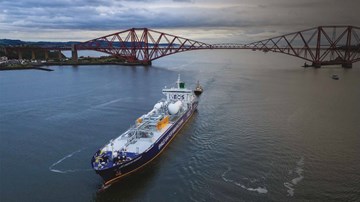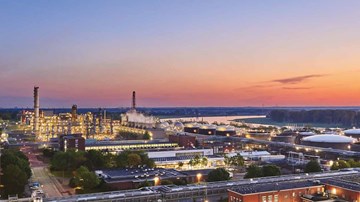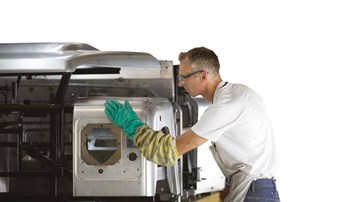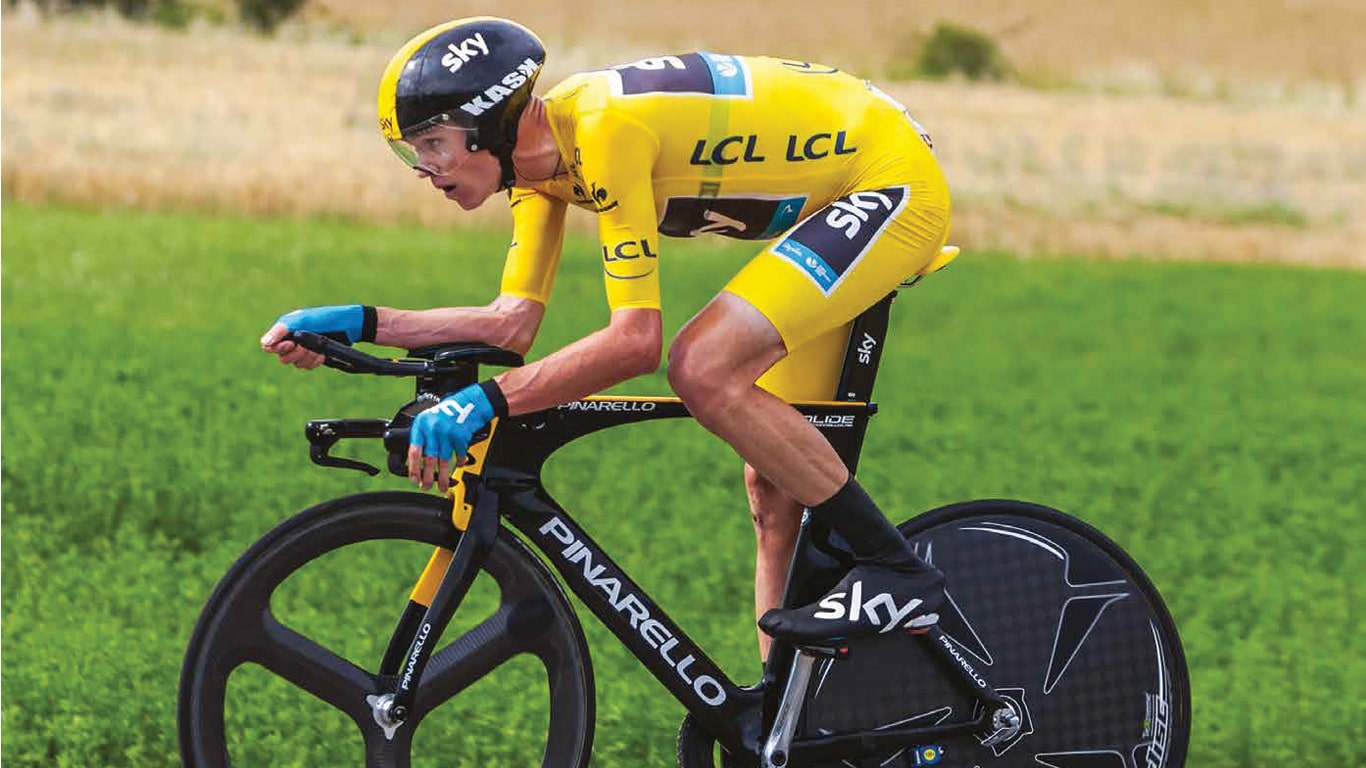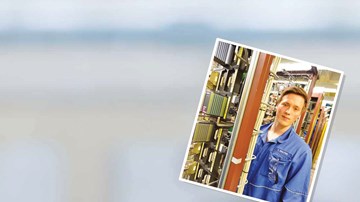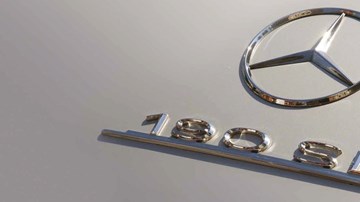GERMANY has long been described as the manufacturing powerhouse of Europe.
Last year its companies exported goods worth a record €1.196 trillion – up 6.4% from 2014 – and employment reached a record-breaking 43 million.
In December Robert E. Scott, a senior Economist and Director of Trade and Manufacturing Policy Research Economic Policy Institute, said while other industrialised nations had crumpled under Asian competition, Germany had increased exports to China and the rest of Asia – despite the fact that it had among the highest manufacturing wages in the world.
“If higher wages hurt manufacturing competitiveness, we’d expect Germany to be doing worse than the United States, but they are not,” he wrote in an article for the Economic Policy Institute.
According to the latest figures from the World Bank, manufacturing in Germany accounts for 23% of the economy – compared to 12% in the US, 11% in France and 9.4% in the UK.
Dig deeper and you realise Germany’s economic miracle is not left to chance or attributed to being in the right place at the right time. It is a result of their work ethic, a government that sees manufacturing as a good source of jobs and sound, lasting economic growth, and the ability and skills to produce goods of the highest quality.
“German companies are rarely the cheapest producers, yet the superior quality and performance of their products enables them to command premium prices and still boost exports,” Charles W. Wessner, a programme director with the Board on Science, Technology, and Economic Policy at the National Research Council, wrote in an article for Mechanical Engineering.
British journalist Justin Rowlatt, the BBC’s South Asia correspondent, spent several months in Germany with his wife Bee and two of their four children trying to discover what made Germany so successful.
Many conversations with his contacts in Germany revealed some home truths.
“One young German woman had worked in an office in the UK and had been horrified to see how little people worked,” he said.
“When Germans talk to each other, it is about work. In the UK she said people were all on Facebook, texting their friends, emailing them, and making personal phone calls.”
Justin worked for Faber-Castell, one of the world’s largest and oldest manufacturers of pencils. The business is still run today by a direct descendent of the founder.
What it does, it does brilliantly.
“The secret of German success seems to be that they focus on one tiny bit of business but do it on a world scale,” he said.
That is certainly true of Faber-Castell.
The business was founded 255 years ago by a cabinet maker who initially produced pencils in his spare time. Today the business runs 14 factories, employs about 7,000 people and sells in more than 100 countries.
“It is a typical mittelstand company,” said Count Anton Wolfgang Faber-Castell who runs the business today.
Germans use the word mittelstand for the millions of medium-sized companies that employ a fifth of the German workforce and focus on niche products that command premium prices around the world.
These family-run businesses often stretch back for generations, and form the backbone of the German economy. They not only supply Germany’s multinational corporations but many are also exporters in their own right.
Tom Peters, an American writer on business management practices, said mittelstand companies were incredibly focused.
“The young men and women go through the apprenticeship system and learn that the goal is excellence,” he said.
There is another good reason why they thrive. And that is, The Fraunhofer Society, a network of 67 government-backed research institutes with 23,000 employees.
“Fraunhofer supports an ecosystem for manufacturing innovation that has helped keep Germany an exporting juggernaut,” Sujai Shivakumar, a specialist in innovation policy at the National Academies in Washington, told The Wall Street Journal.
The Fraunhofer Society provides first-rate, affordable, short-term research that smaller manufacturers would otherwise struggle to afford. These companies use the research to continually improve their processes and products – and, in doing so, stay one step ahead of the competition.
“Put simply, Fraunhofer helps manufacturers bridge the valley of death, which often occurs at a stage of production development where the potential return on investment is high but equally high levels of uncertainty prevent firms from investing significantly in R&D,” said Michael Teiwes, head of PR at Fraunhofer.
Over the past 10 years Professor Dr Bernd Venohr, a German management consultant, has worked with numerous world-leading, medium-sized family businesses in Germany.
“They were sometimes called the ‘hidden champions’ but they are no longer hidden in an increasingly transparent global economy,” he said.
He said they were successful because they understood – and believed – that sound growth and progress stemmed from real innovation, that superior value, not price, mattered to customers and that employees should be treated with respect not as ‘easily to be replaced’ resources.
“These key management principles really are universal truths for any business,” he said. “But while they are easy to understand, they are not always easy to implement.”
He said that his recent study showed that about 1,650 German SMEs were leaders, at least among the top three companies, in the world markets for their products.
The US-based Manufacturers Alliance for Productivity and Innovation said the rest of the world could learn valuable lessons from Germany.
“The quality and extent of their vocational training to prepare young people for skilled manufacturing jobs is to be admired,” said Kris Bledowski, Director of Economic Studies. “Theirs is a society that prizes engineering and exact sciences as aspirational goals in education.”
He does not believe Germany will be greatly affected by the economic slowdown in China.
“Last year exports to China were $97 billion or about 7.2% of Germany’s overall exports,” said Kris. “Germany’s investment in China is miniscule compared to virtually any country in Europe. So, the impact will be rather small, overall.”
And that comes as no surprise to Justin.
“They don’t take their success for granted and I think that’s why the country is so good at focusing on the long-term,” he said, “Their hard work, efficiency and orderliness springs from a deep sense of community and responsibility towards each other.”
And it is to the future they are looking.
Germany has launched Industrie 4, or as it is commonly known ‘The Fourth Industrial Revolution’, with the backing of the German government.
“We want Germany to stay a globally competitive high wage economy and believe Industrie 4.0’s strategy will allow us to do it,” said Professor Henning Kagermann from the National Academy of Science and Engineering.
Kris believes Industrie 4 – to create the factory of the future – was partly born out of fear of America’s digital revolution that started spilling into manufacturing.
“It is fair to say that Germany’s initiative and America’s Industrial Internet concept are transatlantic cousins, albeit separated by language, traditions and business culture,” he said. “But Industrie 4.0 is strictly about Germany. There is nothing European, international, or global about this policy. German taxpayers’ money is being spent on helping domestic companies compete internationally.”
He said America’s project – although based in the US – was open to anyone with a stake in the future of the industrial internet.
“It is global in its reach,” he said. GERMANY’S chemical industry may still be the envy of Europe – but it has been warned not to become complacent.
In a statement to the press earlier this year, German chemical trade association VCI President Marijn Dekkers said after an initially good start to the year, production had now stagnated, sales had dropped and jobs had been lost.
“It is not good news and the outlook is not promising either,” he said.
Germany, he said, faced several challenges including a slowdown in the global markets, the cost of raw materials and energy and Britain’s decision to become the first Member State to leave the European Union.
“It is too early for an appraisal at the moment,” he said. “But the UK’s decision is likely to have negative effects.”
Recent events have helped the German economy, notably the devaluation of the Euro and falling oil prices. But those were now ‘wearing off’, he said.
On the face of it, though, Germany still looks good compared to the rest of the world.
“We have been the world champion of exports for more than a decade, the foreign trade surplus for chemicals has been growing continuously and we are by far the major chemical industry location in Europe,” he said. “We are still acting from a position of strength. But the emphasis is on “still”. In the long run, there are more and more doubts whether Germany can defend its position as a chemical industry location.”
Germany, he said, needed to ensure it did not lose its competitiveness but it was in danger of doing so due to the expansion of production plants in America and the Middle East, rising energy costs in Europe, excessive EU regulations, the loss of businesses in the value chain, a lack of investment in Germany and two few incentives for research and development.
“German industry alone cannot make Germany a world champion in innovation,” he said. “We need support from the political arena. We need to work as one.”
In VCI’s recent report, The German Chemical Industry in 2030, which was conducted by Prognos AG, the VCI says political decisions made today will affect future developments and investments.
What it needs to grow, it said, is a climate free of bureaucracy and one that encourages innovation.
“For us to further invest, a stable planning horizon is needed, especially in energy-related legislation,” said Dr Stephan Müller, Manager at INEOS Köln.
